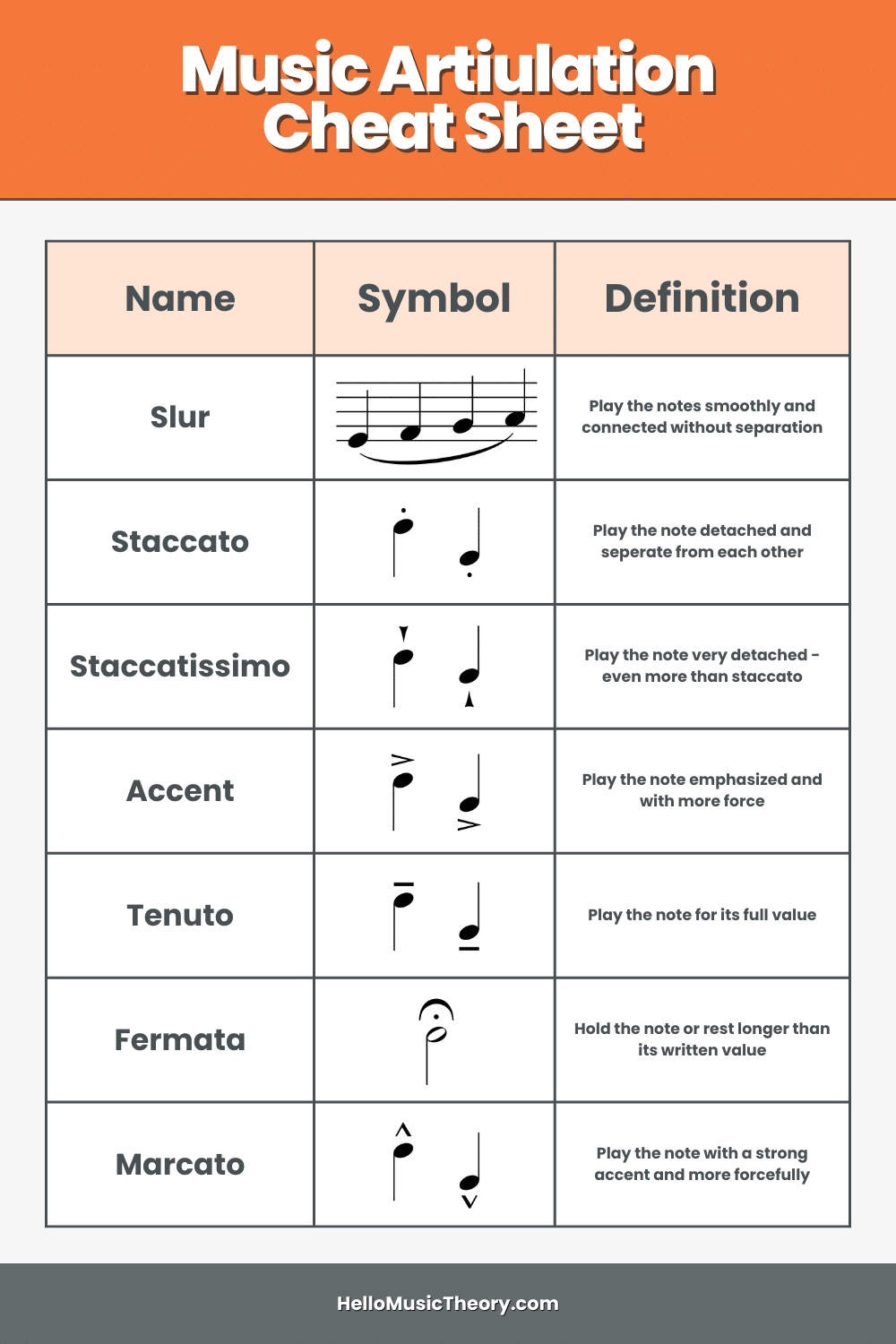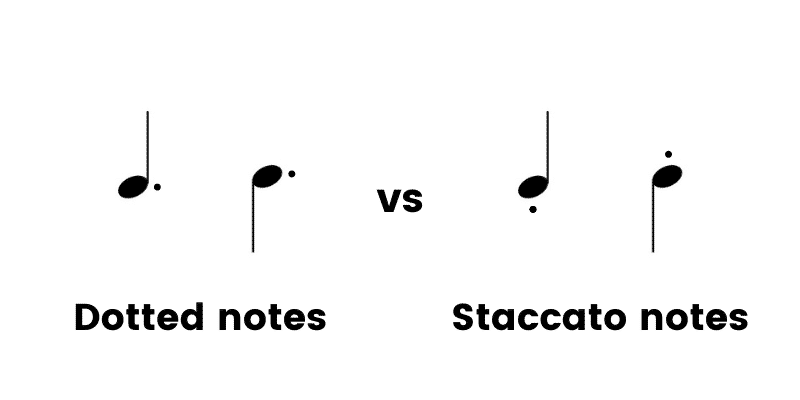The word staccato comes from the Italian word meaning “detached” or “disconnected.”
In the context of music, it means that you should play the notes sharply, short, and completely detached from the notes before and after it.
This is the polar opposite of playing legato, which is another type of articulation telling the musician to play the notes smoothly and connected.
How to Notate Staccato
Staccato is notated with a dot either above or below the notehead, as shown in the image below.

If the stems of the notes point up, then the dot appears below the note, but it appears above the note when the stems face down.
Don’t confuse staccato with dotted notes. They look quite similar, but they mean something completely different (I’ll cover the differences later in this post).
What is Articulation?
Staccato is a type of articulation which is the word we use in music to talk about “how” to play a note, rather than what specific note we play.
There are seven primary articulation marks that every musician must learn:
- Legato (slurs)
- staccato
- staccatissimo
- accent
- tenuto
- fermata
- marcato
Each articulation marking is notated differently. For example, here are all the various articulation markings:

And we’ve made a cheat sheet with each one and its definition.

Staccato vs Dotted Notes
It’s common when starting out learning music theory to confuse dotted notes with staccato markings.
Dotted notes are distinguished from staccato by appearing after the note head and mean something altogether different.

The dot after the note indicates that the note’s rhythm is extended by ½ the length of the note.
In other words, if you have a dot after an eighth note, then the duration of the note will be an eighth note plus a sixteenth note.

The difference between the two is that staccato is an articulation that refers to how the note is played, whereas the dot after the note is an indication of how long the note is sustained.
Examples of Staccato
Now, let’s see what types of music you can expect to hear that are synonymous with staccato rhythms.
Classical music has numerous styles that lend themselves to staccato rhythms.
Viennese waltzes come immediately to mind, as do polkas and more modern rhythms such as tangos.
Johann Straus’ waltzes are some of my favorite examples of the use of staccato.
The following compilation includes the very distinctive styles of staccato employed by violins, woodwinds, and brass instruments:
I don’t think that the next example of staccato rhythm could be mistaken for its unique contribution to the atmosphere and emotion of the tango.
Listening to the rhythm of tango certainly brings the sultry, smoky Buenos Aires dance scene to mind.
Another good example is Mozart’s Piano Concerto No. 21, which contains a wonderful example of staccato strings producing a haunting mood throughout the 2nd movement.
And here’s one more example in Vivaldi’s Concerto No. 1 in E Major, “Spring:” 1:
What is Staccatissimo?
You may have wondered what the differences are between staccato and staccatissimo.
Adding “issimo” to a term simply means “very”.
This is a term that is added to numerous marks and, in this case, refers to playing notes more heavily accented than staccato.
There is some difference of opinion on whether this mark was original to composers or was a later addition by an editor.
In any event, to notateStaccatissimo, instead of using a small dot below or above the note head, you instead use a wedge-shaped mark, as shown below.

Staccatissimo is found on many scores, but your interpretation of it will depend on your personal opinion and training.
In Conclusion
I hope that you now have a greater appreciation for the use of staccato in a musical score.
The magic of music is the ability to lift the spirit or soothe the soul and knowledge of articulation and the use of staccato as a means to convey emotion will help to improve your performance.



